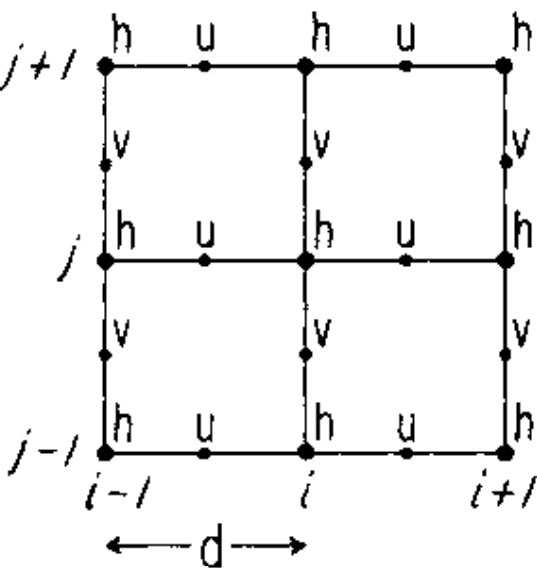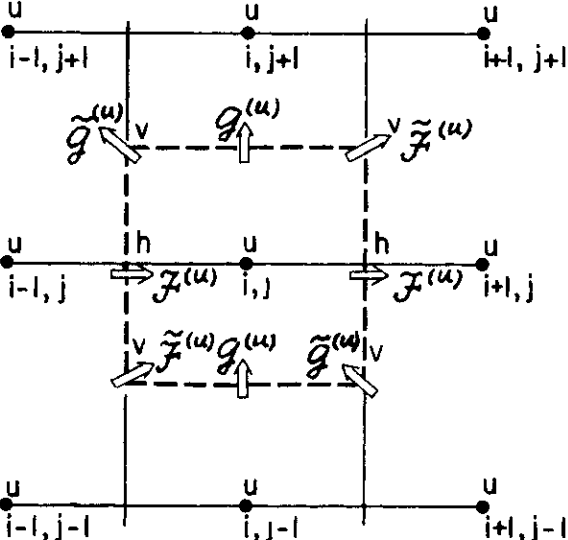The basic algorithm employed for stepping forward the momentum equations is based on retaining non-divergence of the flow at all times. This is most naturally done if the components of flow are staggered in space in the form of an Arakawa C grid.


(1) Create a 2D scalar field on a square grid (e.g., a Gaussian bump). Write a function to compute the Laplacian using central finite differences.
Use a uniform 100×100 grid over \([-1,1]\), apply second-order centered differences for \(\frac{\partial^2}{\partial x^2}\) and \(\frac{\partial^2}{\partial y^2}\), and visualize both the input field and the computed Laplacian.
You can use matplotlib.pyplot.contourf or imshow to plot both the scalar field and its Laplacian side by side.
(2) Initialize a 2D velocity field representing a shear or vortex flow.
Write a function to compute the vorticity field using finite differences, and plot the result with a colormap.
Use vorticity = ∂v/∂x - ∂u/∂y, implement centered differences for spatial derivatives, and plot the vorticity field using imshow or contourf with labeled axes and colorbar.
(3) Initialize a passive tracer field and advect it in a constant 2D velocity field (e.g., \(u = 1, v = 0\)).
Use an explicit time-stepping scheme and finite differences, then create an animation to visualize the tracer's evolution.
Implement the advection equation \(\frac{\partial q}{\partial t} + u \frac{\partial q}{\partial x} + v \frac{\partial q}{\partial y} = 0\) using either upwind or central differencing, apply periodic boundaries manually, and plot the tracer field using matplotlib.animation.FuncAnimation.
1 This problem set contains 6 problems, and your final score will be based on the 4 problems on which you earned the highest scores.
2 A. Arakawa and V. Lamb. Computational design of the basic dynamical processes of the ucla general circulation model. Meth. Comput. Phys., 17:174–267, 1977.